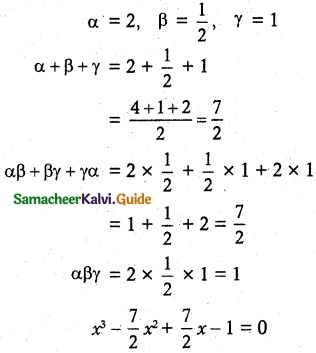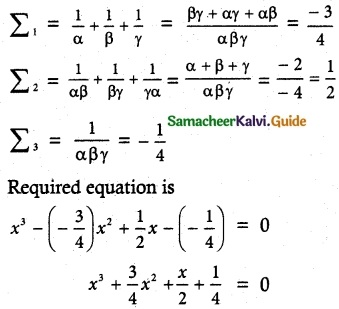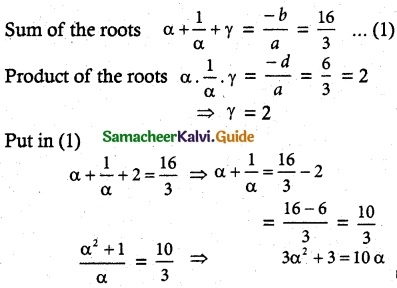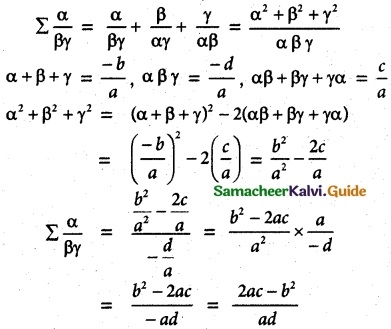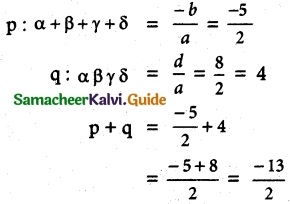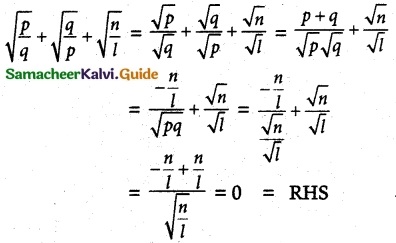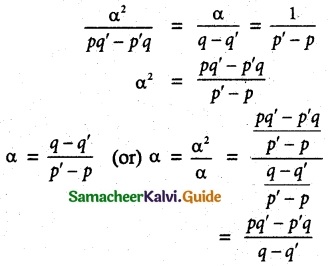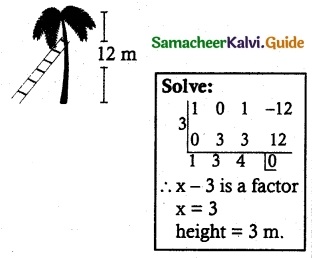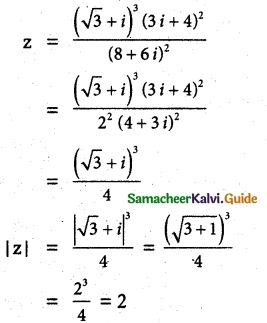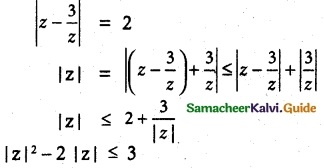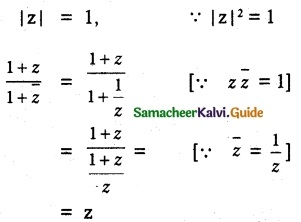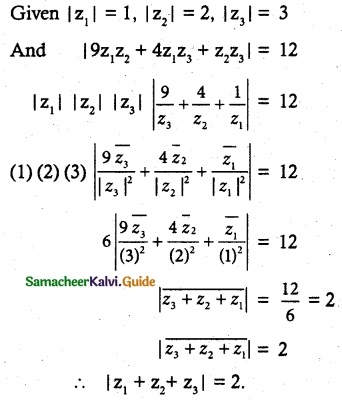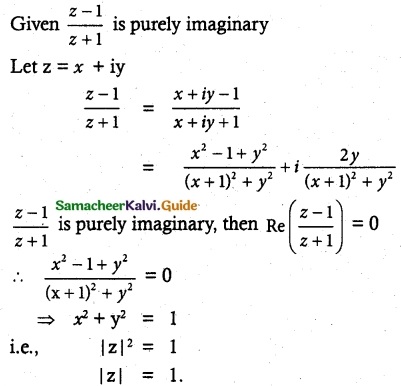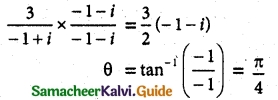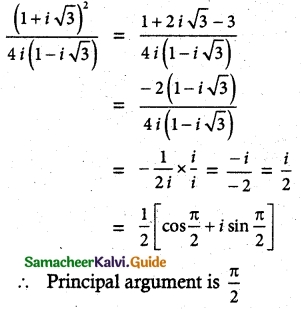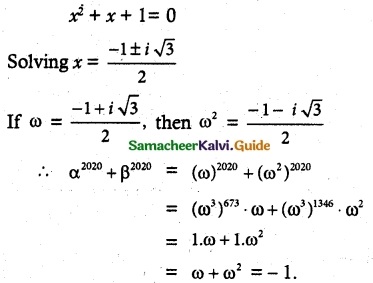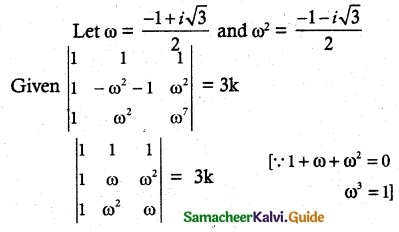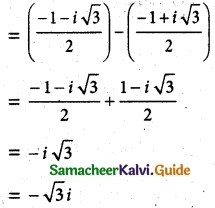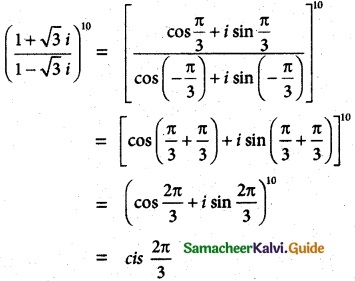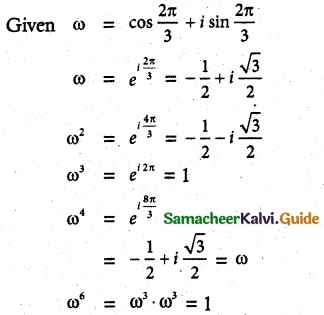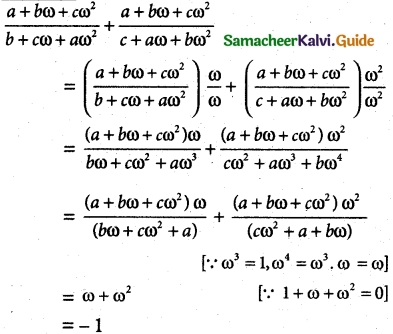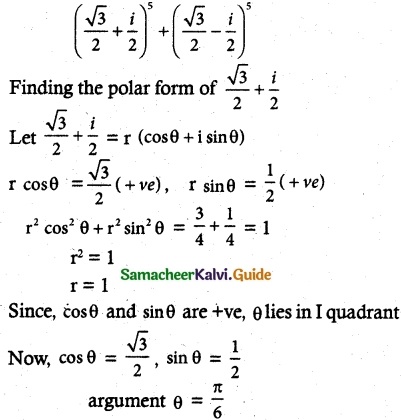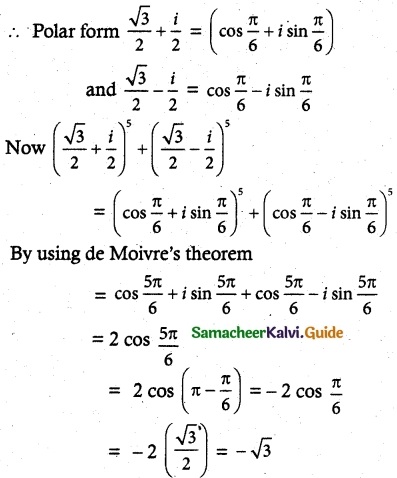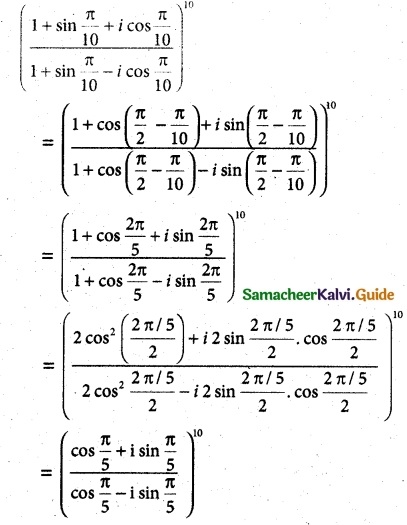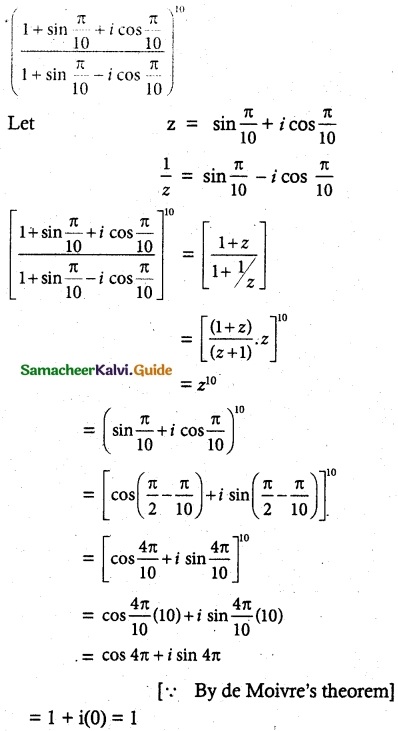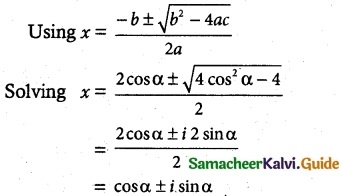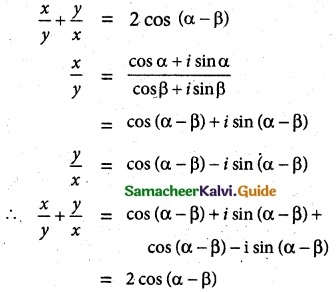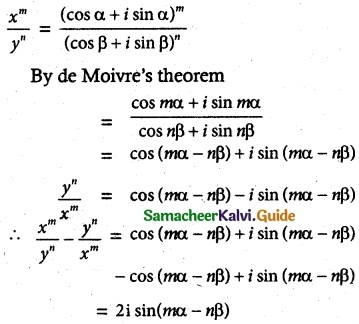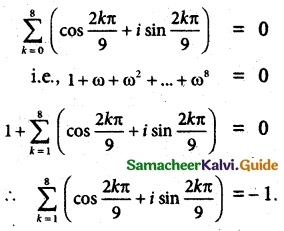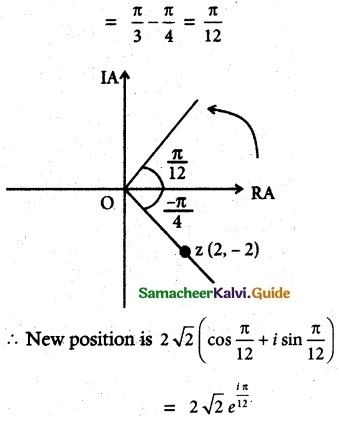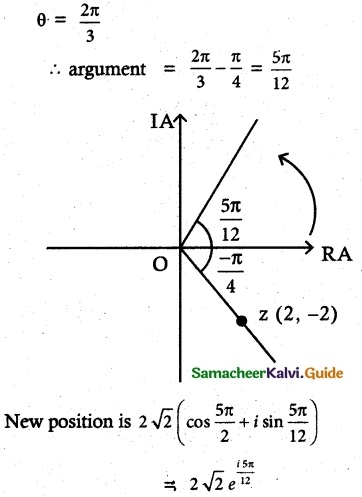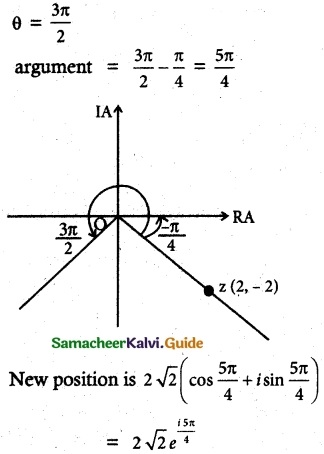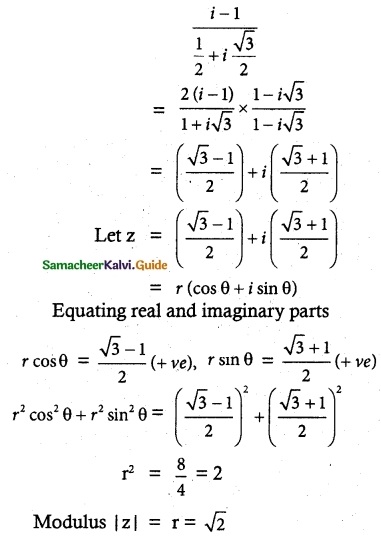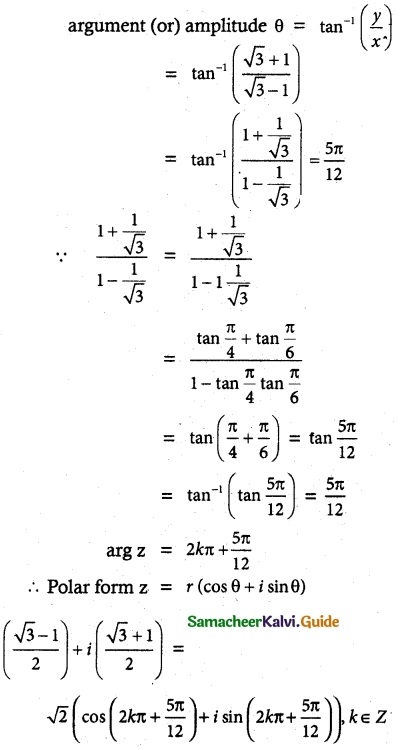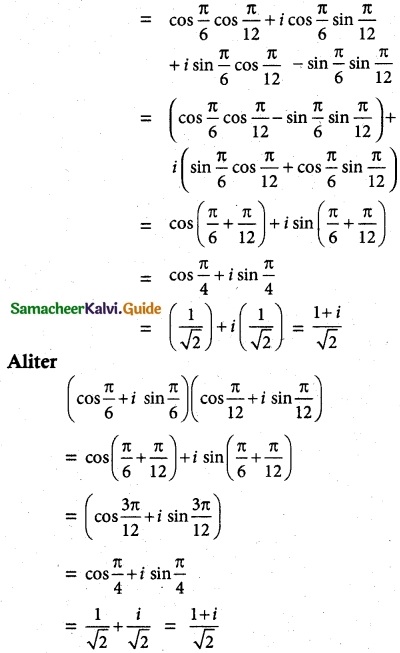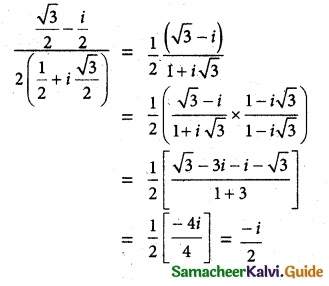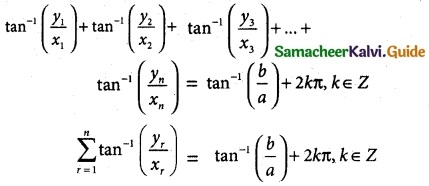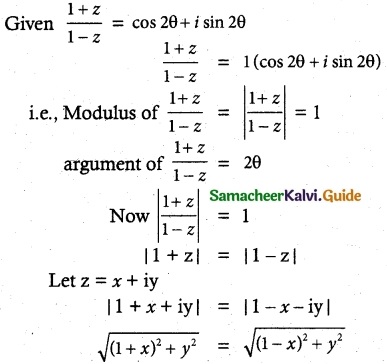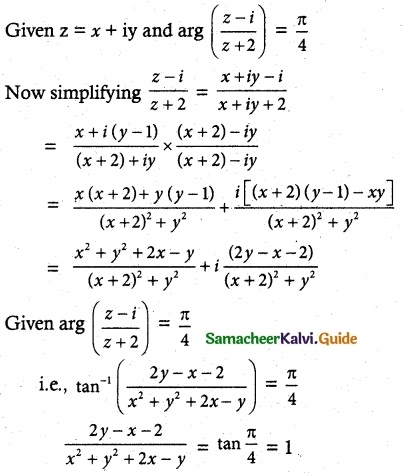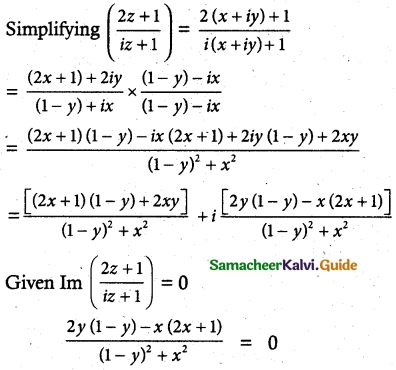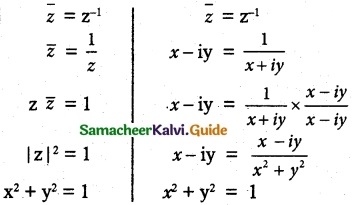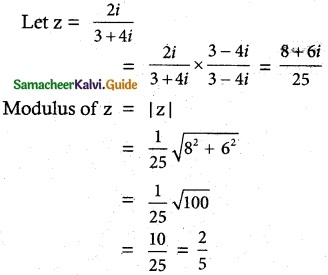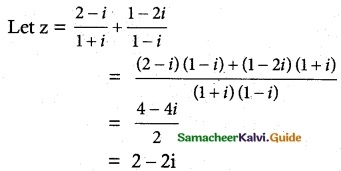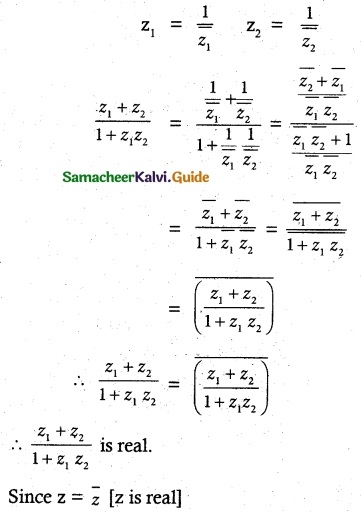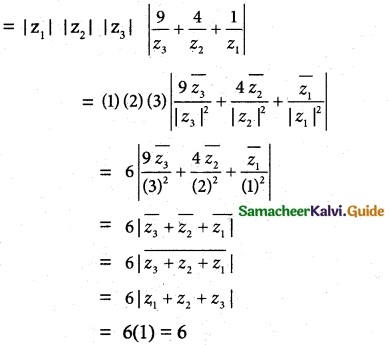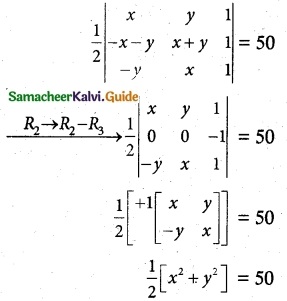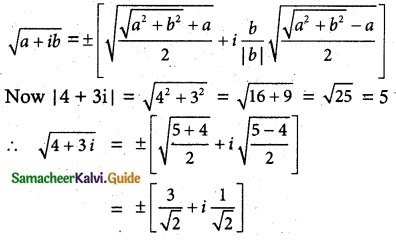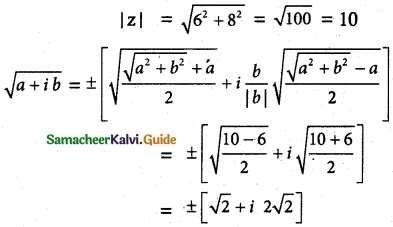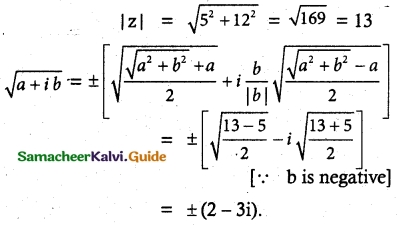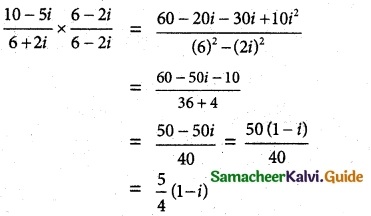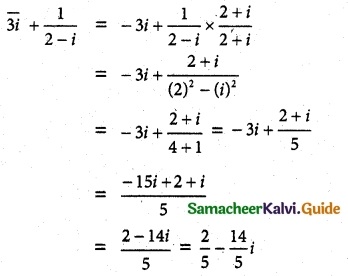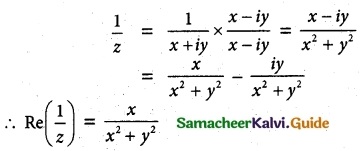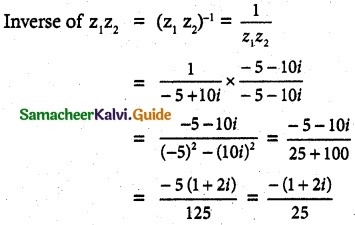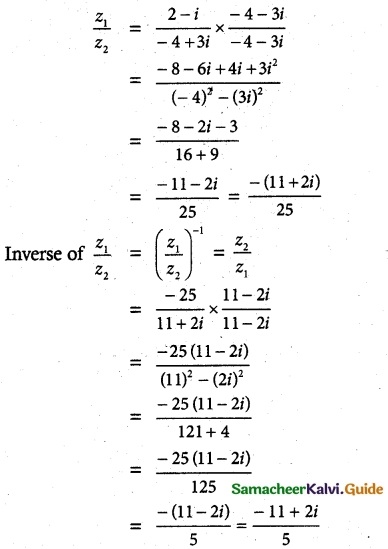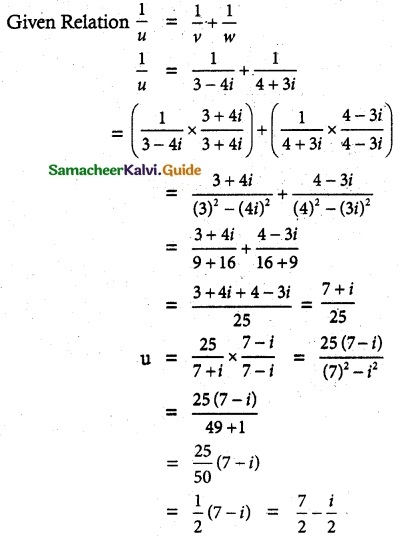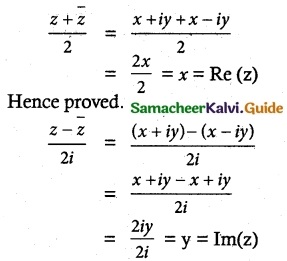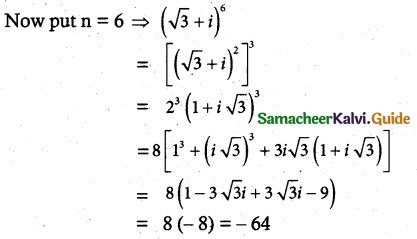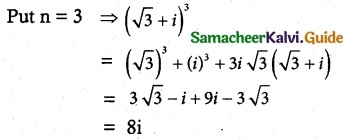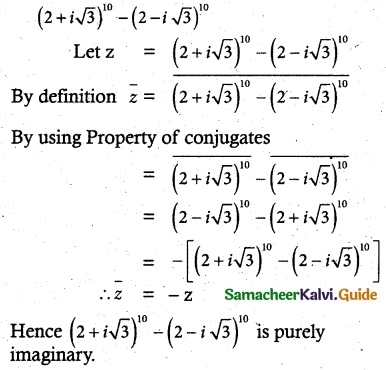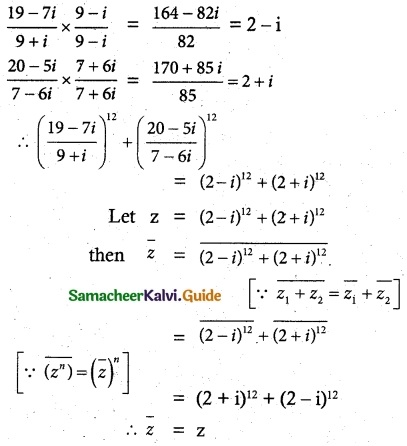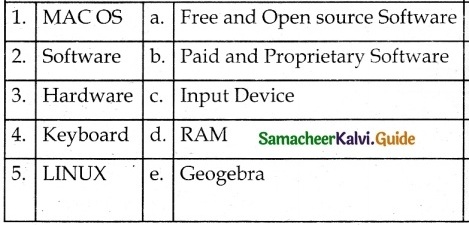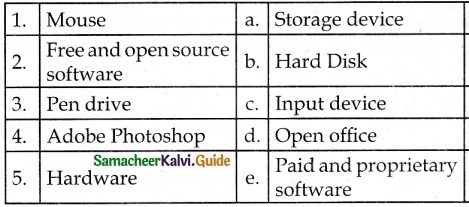Tamilnadu State Board New Syllabus Samacheer Kalvi 12th Maths Guide Pdf Chapter 3 Theory of Equations Ex 3.2 Textbook Questions and Answers, Notes.
Tamilnadu Samacheer Kalvi 12th Maths Solutions Chapter 3 Theory of Equations Ex 3.2
Question 1.
If k is real, discuss the nature of the roots of the polynomial equation 2x² + kx + k = 0, in terms of k.
Solution:
The given quadratic equation is 2x2 + kx + k = 0
a = 2, b = k, c = k
∆ = b2 – 4ac = k2 – 4(2) k = k2 – 8k
(i) If the roots are equal
k2 – 8k = 0
⇒ k(k – 8) = 0
⇒ k = 0, k = 8
(ii) If the roots are real
k2 – 8k > 0
k(k – 8) > 0
k ∈ (-∞, 0) ∪ (8, ∞)
(iii) If this roots are imaginary
k2 – 8k < 0
⇒ k ∈ (0, 8)
Question 2.
Find a polynomial equation of minimum degree with rational coefficients, having 2 + √3 i as a root.
Solution:
Let the root be 2 + i √3
Another root be 2 – i √3
Sum of the roots = 2 + i √3 + 2 – i √3 = 4
Product of the roots = (2 + i √3) (2 – i √3) = 2² + √3² = 4 + 3 = 7
x² – (SR)x + PR = 0
x² – 4x + 7 = 0
![]()
Question 3.
Find a polynomial equation of minimum degree with rational coefficients, having 2i + 3 as a root.
Solution:
Given roots is (3 + 2i), the other root is (3 – 2i);
Since imaginary roots occur in with real co-efficient occurring conjugate pairs.
x2 – x(S.O.R) + P.O.R = 0
⇒ x2 – x(6) + (9 + 4) = 0
⇒ x2 – 6x + 13 = 0
![]()
Question 4.
Find a polynomial equation of minimum degree with rational coefficients, having √5 – √3 as a root.
Solution:
Let the root be √5 – √3,
Another root is √5 + √3
Sum of the roots = √5 – √3 + √5 + √3 = 2√5
Product of roots = (√5 – √3) (√5 + √3)
√5² – √3² = 5 – 3 = 2
x² – (SR)x + PR = 0
x² – 2√5 x + 2 = 0 which is not rational co-efficient.
to make rational co-efficient
(x² + 2√5 x + 2) (x² + 2 + 2√5 x) = 0
(x² + 2)² – (2√5x)² = 0
x4 + 4 + 4x² – 20x² = 0
⇒ x4 – 16x² + 4 = 0 is a rational co-efficient polynomial equation.
![]()
Question 5.
Prove that a straight line and parabola cannot intersect at more than two points.
Solution:
Let the standard equation of parabola y2 = 4ax …..(1)
Equation of line be y = mx + c …(2)
Solving (1) & (2)
(mx + c)2 = 4ax
⇒ mx2 + 2mcx + c2 – 4ax = 0
⇒ mx2 + 2x(mc – 2a) + c2 = 0
This equation can not have more than two solutions and
hence a line and parabola cannot intersect at more than two points.
![]()
